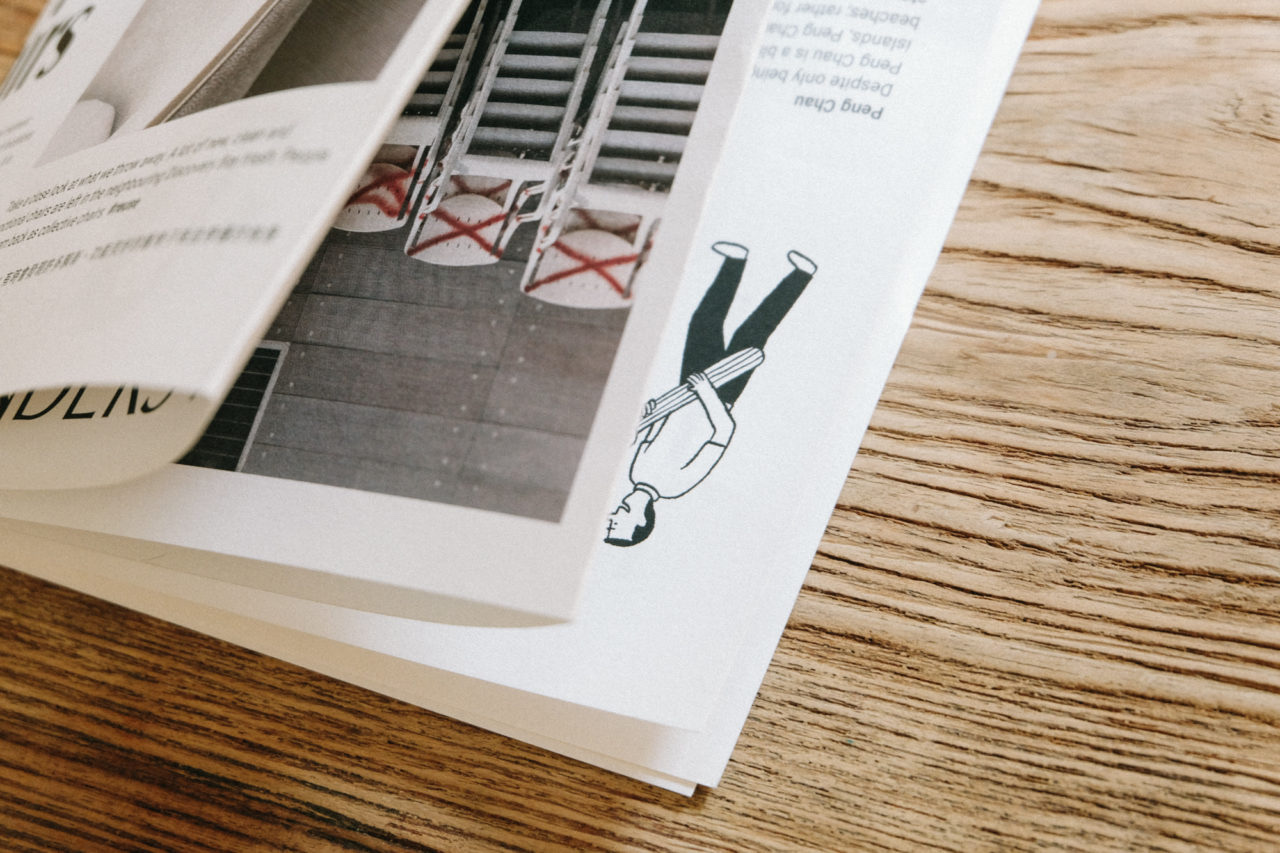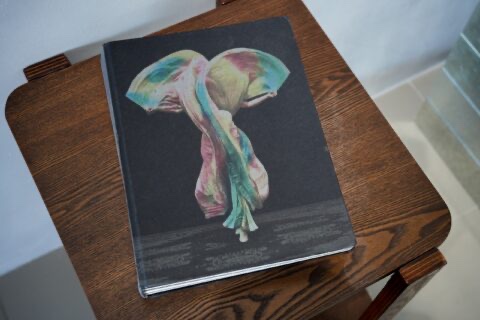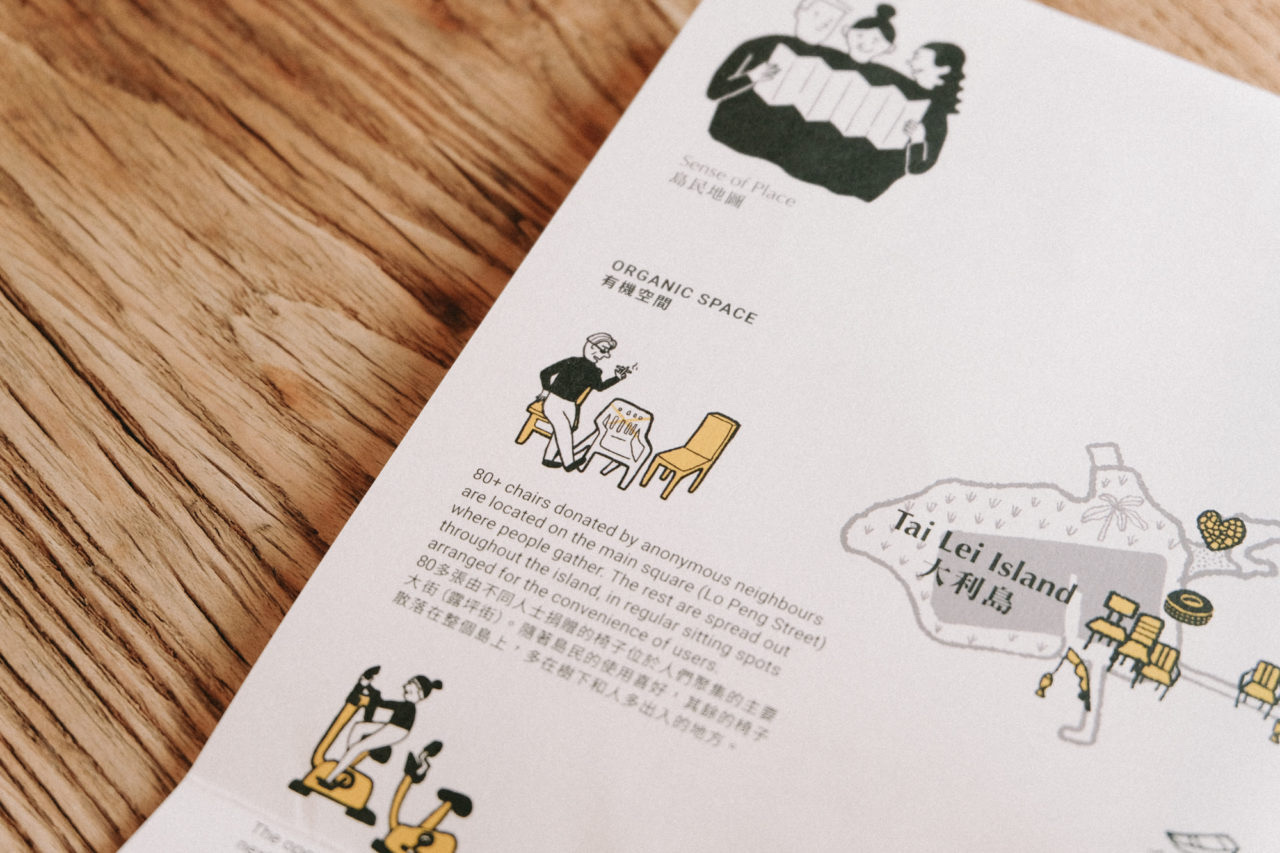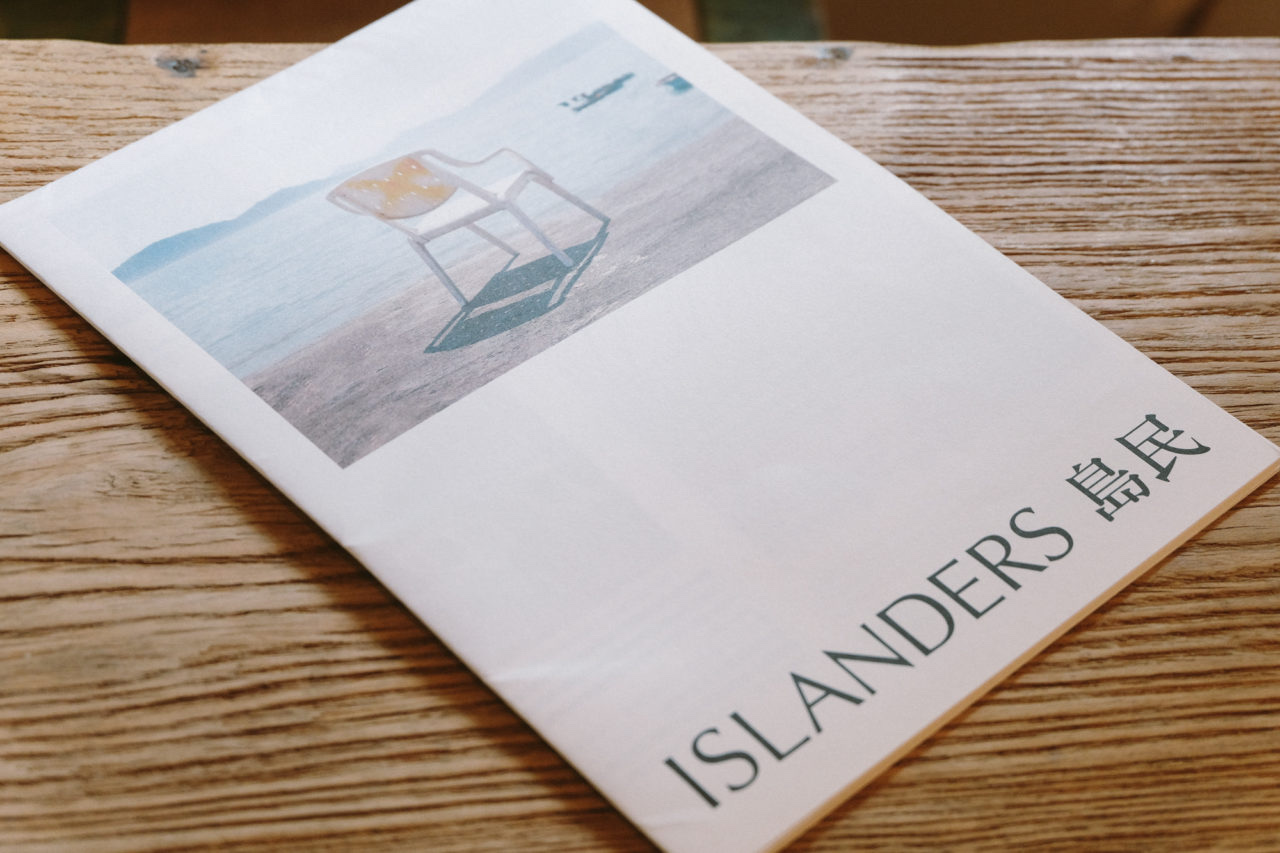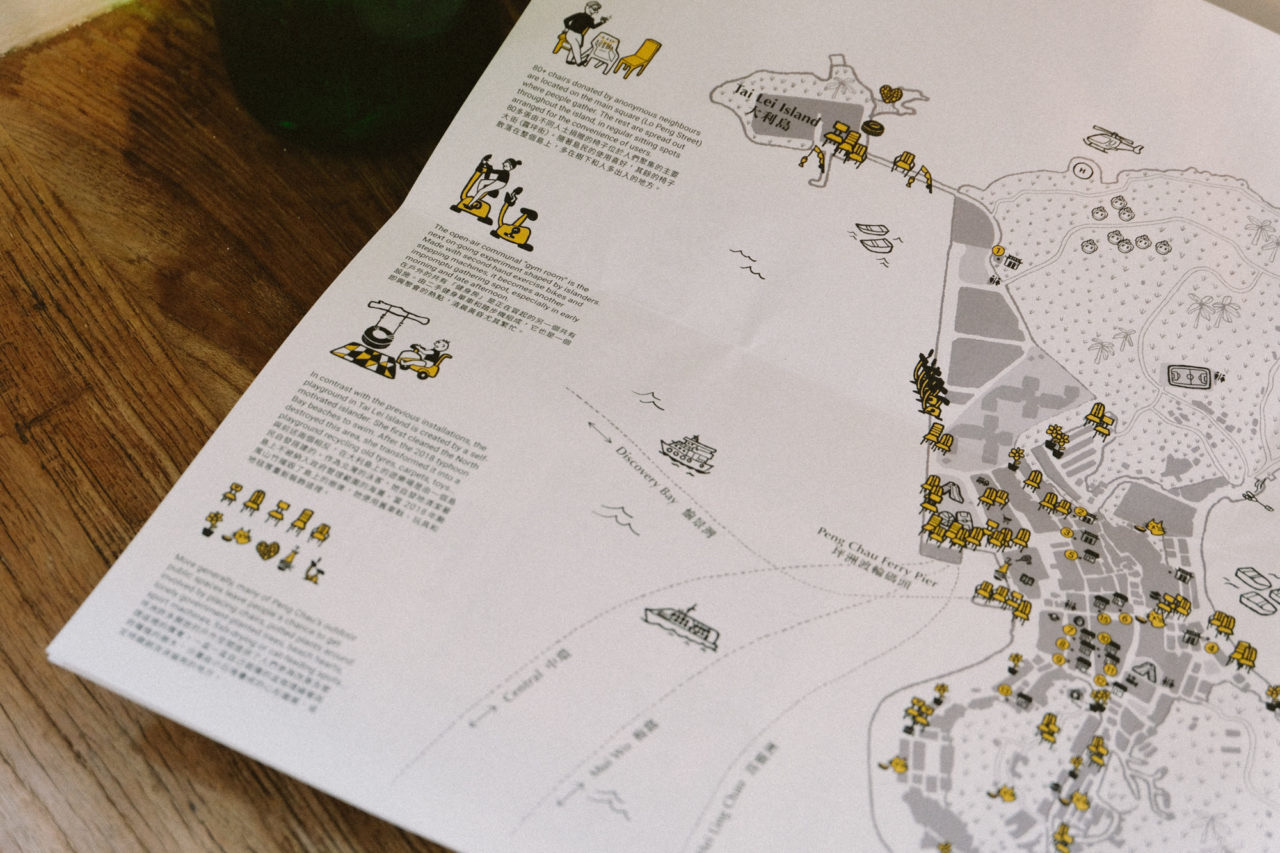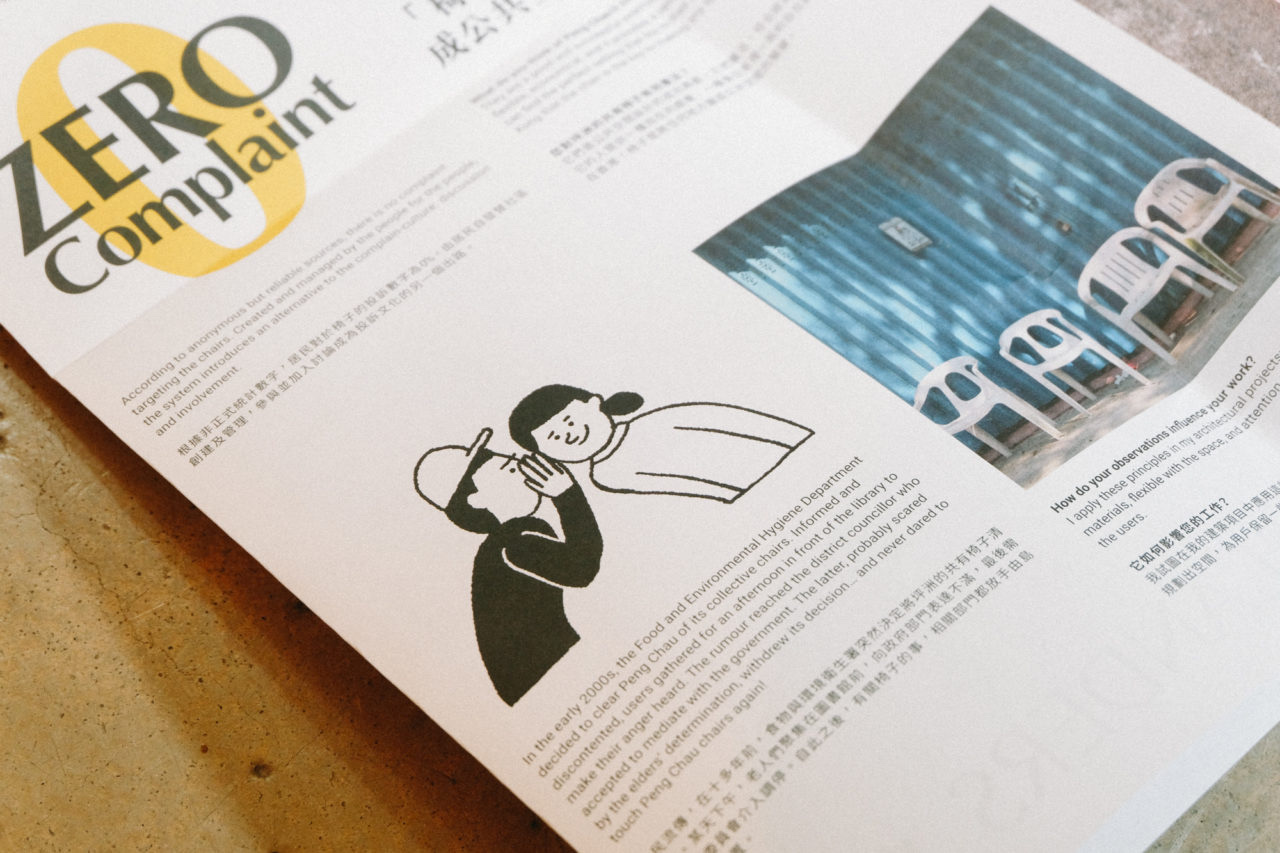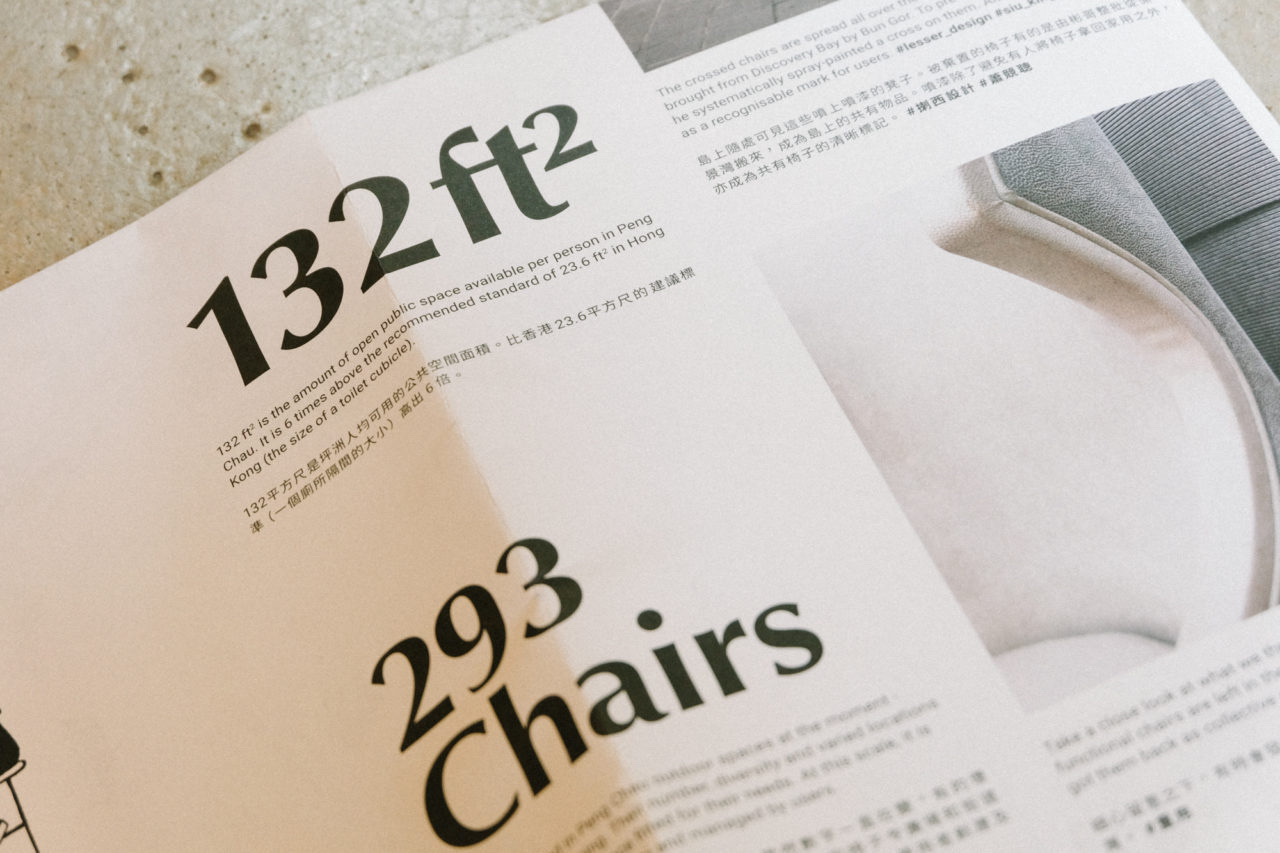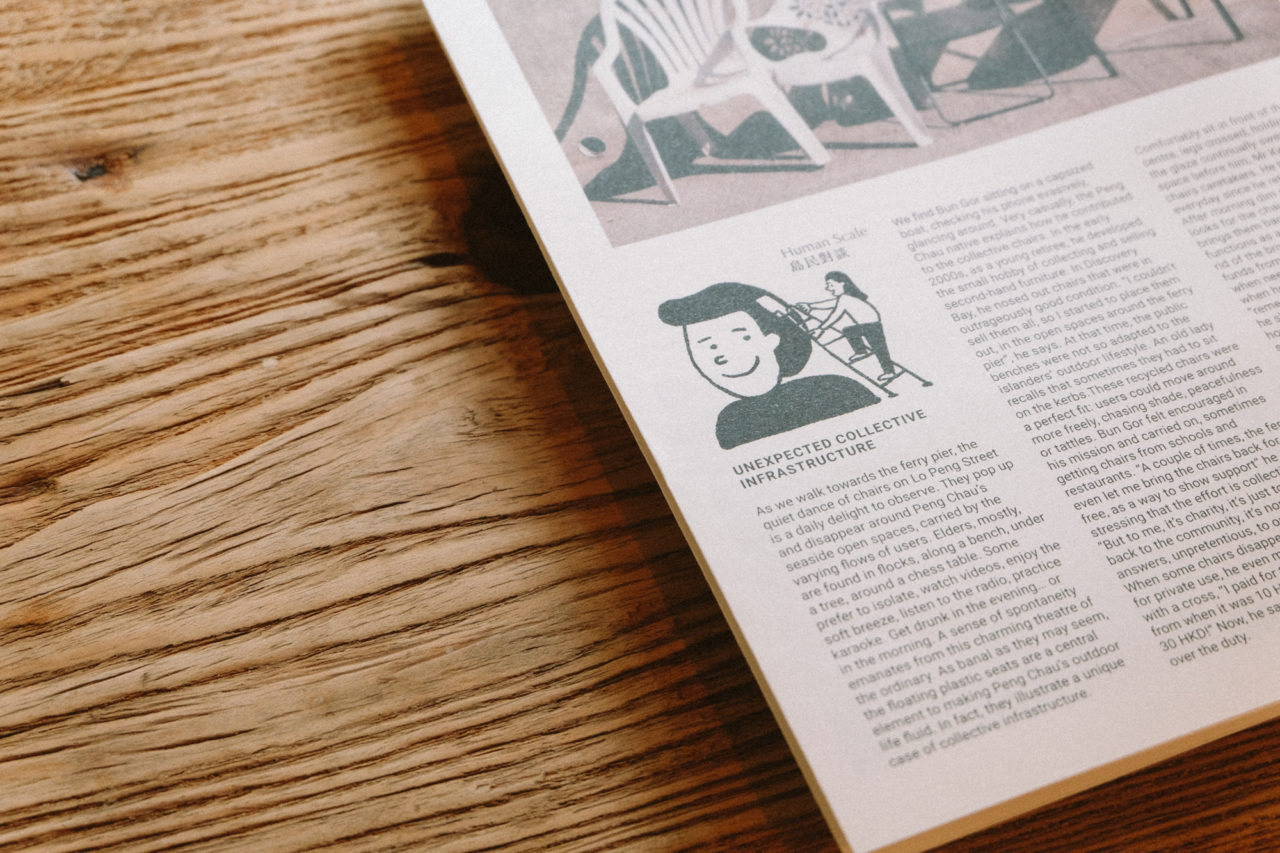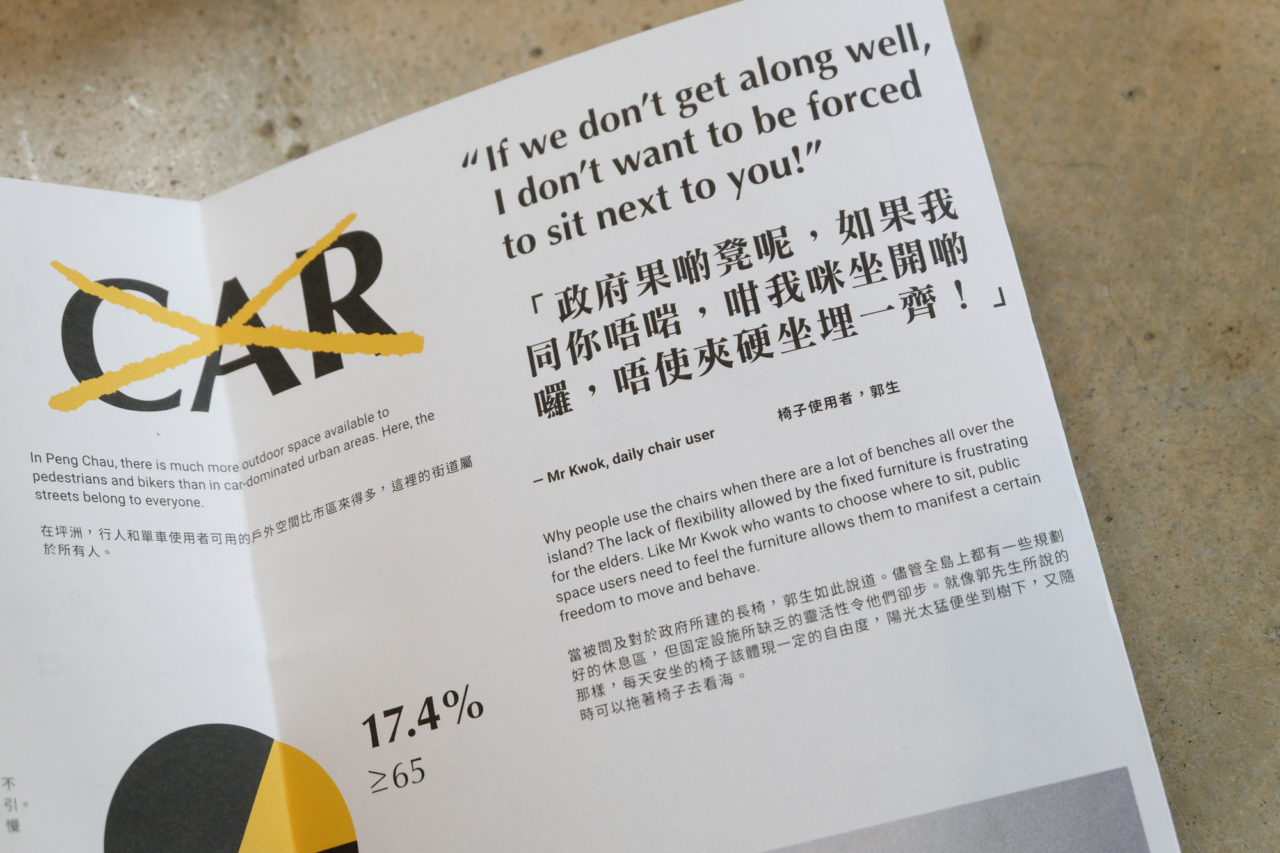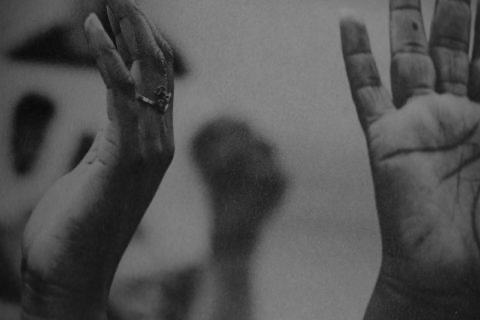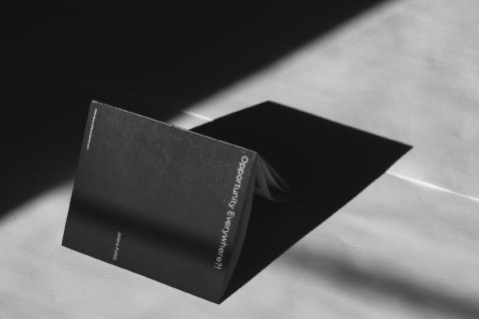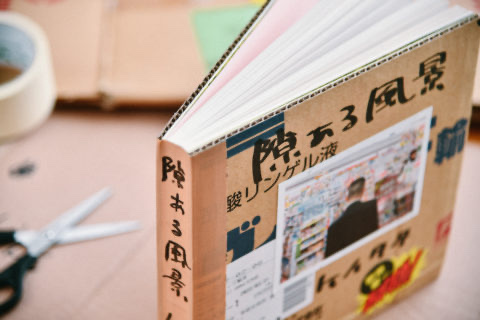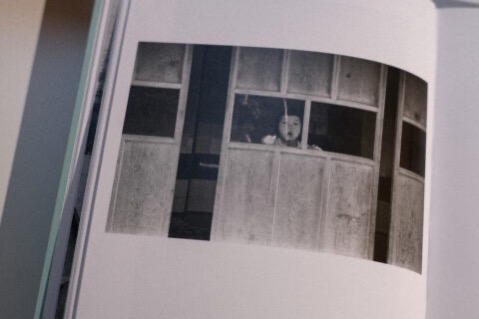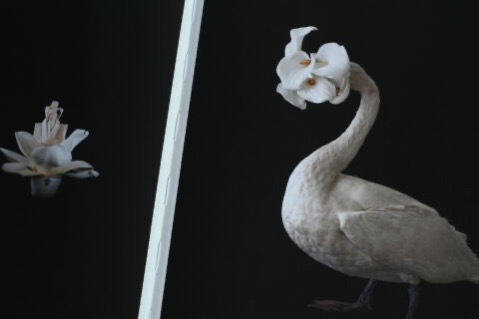「在坪洲,遊人從下船的一刻便已感覺到跟城市不同的氛圍,偌大的廣場、樹下乘涼的老人,都讓這裡的時間以不一樣的質感在流動。而在背後支撐著的正是我們常常忽略的椅子。請坐,讓我們慢慢告訴您整個故事。」獨立雜誌《Islanders島民》由Kit和Myriem Alnet一起創辦,由他們居住的坪洲出發,探討香港的離島和住在離島的島民們的有機生活空間。雜誌以map-zine的形式出版,設計簡潔,加上插畫家UUendy可愛的插圖,把坪洲的環境和人物都躍然紙上,讓人對坪洲有嶄新而深刻的理解。面積只有不到1平方公里、住了差不多六千五百人的島嶼,有甚麼讓人好奇的事情正在發生呢?
坪洲,不是最熱鬧、最多姿多采的地方,但由島民們自發地創造、由二百多張的椅子組成的公共空間,看似是無心插柳,卻成為了島上的居民坐下來聊天、休息,甚至成為了做運動的公共設施,它們連結島與人和島民之間的關係,不但共同建設著社區,更為公共空間帶來溫度。有人說,椅子帶著停頓的意思,坐在椅子上代表著在路途中停下來的時刻,在這時遇到的人和事,總叫人深刻難忘。
“On Peng Chau island, the mysterious choreography of chairs in the outdoor public spaces tints the atmosphere with romanticism. This curious liveliness is an invitation to look beyond appearances: we shed light on this ordinary sitting device to explore its overlooked community-fostering properties. Take a seat and let us tell you this story.” Founded by Peng Chau residents Kit Chan and Myriem Alnet, the independent magazine Islanders enquires into the outlying islands of Hong Kong, their people, and organic lifestyles. The magazine is published in the form of map-zine with a simple design and the cute illustrations by UUendy with the goal being to give people a new and profound understanding of Peng Chau. So what’s going on on this tiny island that occupies an area of about one square kilometers and houses almost 6500 residents?
Peng Chau might not be the most lively and charming place on the map, but there is a public space on the island that connects the visitors and the islanders together, fostering a sense of community and facilitating chance encounters. The aforementioned public space is a spontaneous creation by the islanders that consists of over 200 self-managed communal chairs. The islanders and visitors can sit down to chat and rest, and even use the chairs for exercising. Some people think that chairs represent the meaning of taking a pause, and that sitting on a chair represents taking a break during a journey. If that’s the case, the people and things that we encounter while sitting on a chair would be particularly memorable.
K:Kit Chan
M: Myriem Alnet
1/ 為甚麼會有辦 《islanders 島民》的想法?為甚麼是一本實體的雜誌?
K: 我希望對現今城市單一的發展方式提出一些意見,而製作實體雜誌是因為我認為資訊可以網上觀看,但表達一些概念則需要實體化。
2/ 《islanders 島民》是怎樣誕生的?過程有沒有遇到困難或難忘的經驗?
K: 原來的構想是製作一份介紹社區的地圖刊物,可能坪洲的面積較小吧,嘗試了無數的試刊說不上很有趣,也有想過放棄,但後來發現正正因為坪洲的小,而找到了現在這一個獨特可行的方向來製作成map-zine。
3/ 這次的主題是圍繞著陸日小店的坪洲,你們駐紮了坪洲已有一段時間,對坪洲有甚麼感覺?甚麼東西讓你最深刻?有沒有有趣或難忘的經歷?
K: 坪洲是一個實而不華嘅地方,這裡大部分的人都很安靜內歛,沒有人會刻意地嘩眾取寵,引來別人的目光。若你漸漸地了解這裡的人,便會找到鄰居們的與眾不同!例如今期訪問的對象Géraldine Borio,就是因陸日小店而認識的。開始時我們只是點頭之交的街坊,認識好一段時間後才發現她在港大任教建築;再過了一段日子,才知道她正正是以坪洲空間作為她在大學研究的項目。因此,她也順理成章地成為我們今期的受訪對象。
M: 《Islanders島民》是一件反映我們緩慢地整合一個緊密的社區的產品。我們花了許多時間才能確切地找到我們實正想說或做的東西。
4/ 這期map-zine的主題是探討島嶼的社區空間,為甚麼有這個構思? 對你來說,這裡的社區空間有甚麼特別?
M: 這裡有一種社區的氛圍,每個人都是社區的一份子,同時貢獻著社區。好像香港的任何一個地方,公共空間被個人、自發性地被使用著,但同時,這裡也有一部分人共同地創造一個共享的空間,並共同地使用著,這種現象更為罕見。 無論是個人動機還是集體動機,為社區一直貢獻著的人始終是一些無名氏,也沒有人期望從中獲得讚揚,同時表達了居民對島上社區生活的想像。 這種對「公共」的想像是非常獨特的,需要被加以強調。
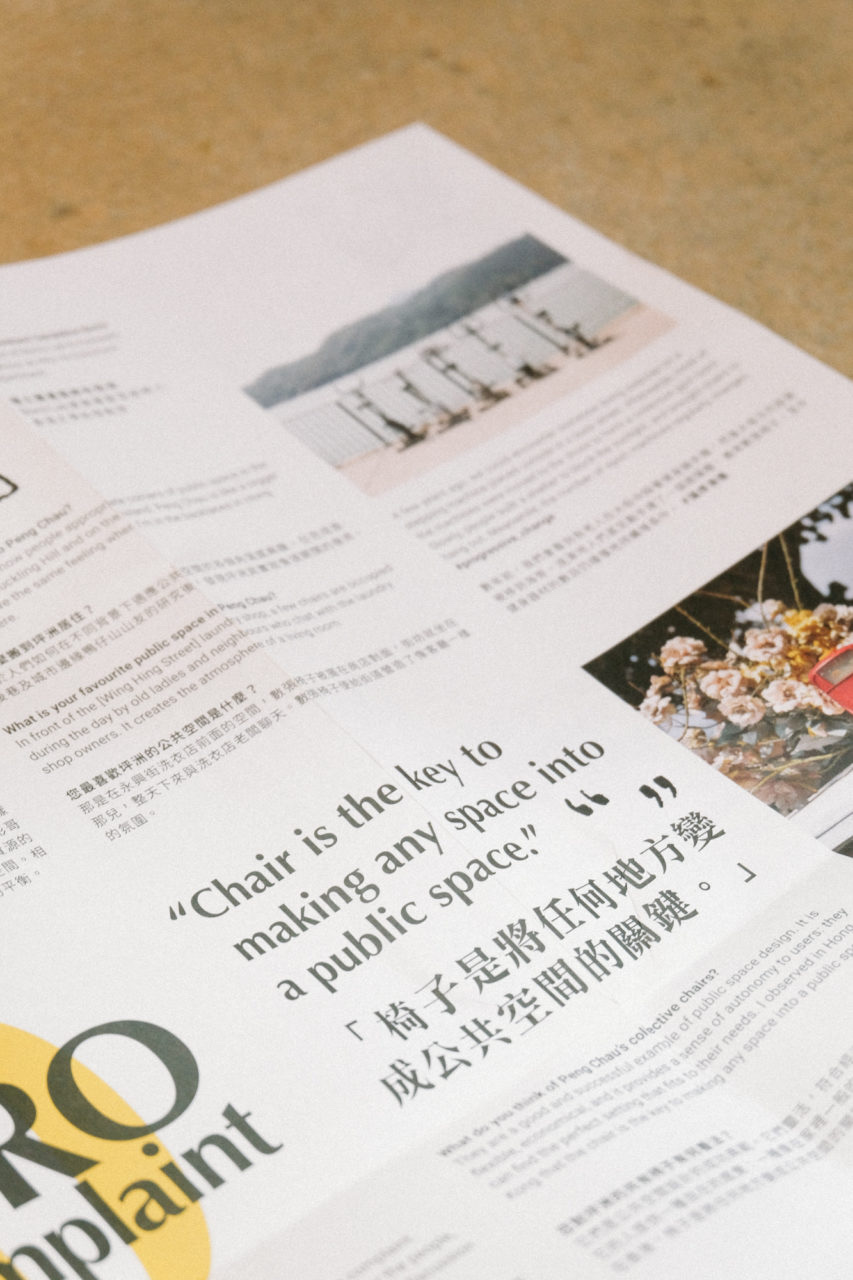
1/ Where did the idea of Islanders come from? And why did you choose to make it a printed magazine?
K: We hope to give an alternative option to the only way of development in Hong Kong. Information can easily be shared online, but we try to develop concepts, and the print out format is more fit for that.
2/ How did the Islanders come into shape? Did you encounter any difficulties or unforgettable experiences during the process?
K: The original idea was to produce a map-zine to introduce the local Peng Chau community. But maybe because Peng Chau is such a small island, the trial publications were not that interesting. We did think of giving up, but then realized it’s because of the tiny size of Peng Chau that makes it possible to produce such a unique map-zine.
M: Islanders is the product of a reflection on our slow integration into a closed community. It took time before we can put the finger on what we actually want to say or do.
3/ The current issue of Islanders centres on the small shop, Sun Sat Store. Having resided in Peng Chau for quite some time, how do you feel about this place? What impresses you the most? Is there anything particularly interesting or memorable?
K: Peng Chau is a place that has a subtle beauty. Most of the people are quiet about themselves, no one is bragging out, trying to get attention. Little by little you get to know its people and find out your neighbours are actually exceptional! For example, I got to know this issue interviewee, because of the shop. A regular customer, lovely neighbour, it’s only slowly that I find out she teaches in Hong Kong University and looks at Peng Chau as both a research field and a living place.
4/ The current issue explores the community space of the island. How did this idea come up? What is special about the community space here?
M: There is a sense of community, belonging to the community and contributing to the community. Like everywhere in Hong Kong, public space is occupied by private, self-motivated initiatives. But there is also, which is more rare, a layer of occupation for the commons/for collective use. Either individually or collectively-motivated, the contributors are always anonymous, no one is trying to get credit from it, and also express a vision of residents about community life on their island. This vision of the “commons” is quite exceptional and needs to be highlighted.
5/ Map-zine中有關於「島民對談」的內容,你認為島嶼與人的關係是甚麼?他們能為你帶來靈感與反思嗎?
M: 從本質上來說,島嶼存在著很多的限制, 島上的居民要以創意的方法去解決遇上的限制。在這過程中,他們在島上落地生根。人們必須依附在他們的土地之上,但更重要的是,這是我們作為生態系統裡的一部分的一種生活方式。我們每天都在從中學習,尤其是從我們開始為map-zine進行研究以來。我確信我們可以找到一個尊重社會環境、平衡的生活方式。
6/ 你希望map-zine能為島嶼內與外的人帶來甚麼?他們對這本map-zine的反應或感想是?
M: 我們希望住在島上的人能夠更了解這個社區的優點,並知道如何去融入和尊重它。因為我們強調的是人們主動地去創造更好的事物,所以要做到平衡狀態是非常困難的。過多的遊客、階級化或錯誤使用,都會破壞這種平衡,我們希望不論是島上的居民或是外來的人都能夠注意這一點。拿著這map-zine來坪洲觀光的人,我們希望他們能尊重島上的居民,以及不要再視島民為落後的人。作為城市研究的愛好者,我們希望透過展示一個以公共空間發展為主導、可持續發展生活方式的例子來作出貢獻。目前為止,我們沒有收到太多批判性的回應,這對於我們的改進沒有多大的作用,如果你有些想法,也可以跟我們分享呢!
7/ 接下來,還會想探討甚麼主題?設計上,會與第一期有不同的地方嗎?
K: 我們還是會探討島上生活的各個基本面向,設計上則每期都會有所不同,但整體風格不會改變。
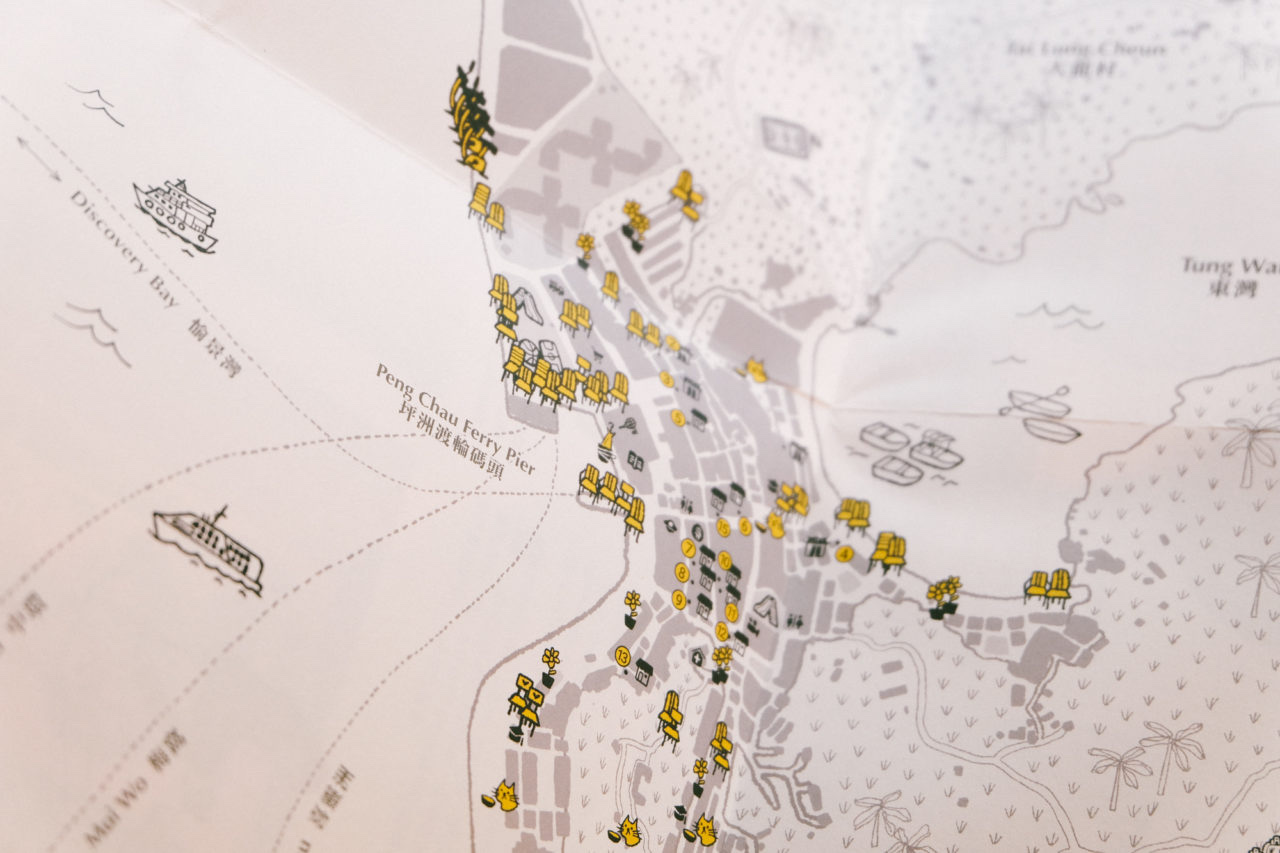
5/ There is this section called “Islander Dialogue” in the map-zine. What do you think of the relationship between islands and people? What kind of inspiration and reflection does it bring to you?
M: The island by its very nature imposes a lot of limitations. Its residents have to deal with it in a creative way and by this very process they anchor to the land. There is an attachment of people to their territory, but also, and more importantly, a way to live as part of an ecosystem. We learn from it everyday, notably since we started our research for the map-zine. I really believe we can find here a balanced lifestyle respectful of our milieux.
6/ What do you hope this map-zine can bring to the people on the island and outside of the island? What are their reactions or impressions to this map-zine?
M: We hope people living on the island can have a better understanding of the strengths of this community and know how to integrate/respect it. Because the things we highlight are incremental, made by people, the balance is very fragile. Too much tourism, gentrification and misuse can break the balance. We want people both living here and outside to be aware of it. For outsiders who use the map-zine to travel to the island, we hope they can respect people living here, and stop considering islanders as backward. For urban studies nerds, we hope to contribute to showing examples of sustainable lifestyle, commons-oriented development. We didn’t have much critical feedback until now, which is not helping much to improve the product. If you get some please share to us!
7/ What other topics do you want to explore? Design-wise, will there be any difference from the first issue?
K: We will continue to explore the basic aspects of life on the island. The design will be different for each issue, but the overall style will stay the same.
